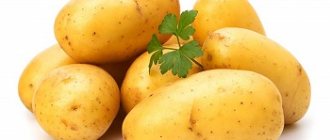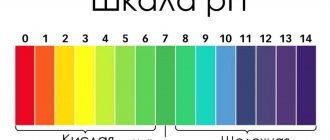We can safely say about the 25th element of the Periodic Table: the spool is small, but expensive. It is only 11-20 grams, but the importance of manganese in the human body is difficult to overestimate. Without it, many biochemical processes and normal functioning of internal organs are impossible. Fortunately, most foods that are rich in it are not exotic. We consume them daily. The main thing is to know which product contains manganese, how much of this microelement is required and how to prepare dishes correctly so as not to destroy the valuable component.
Functions in the body
Manganese is valuable for the body of any person as a self-sufficient important component and “organizer” of many biochemical processes.
Biological mission
As an independent player, microelement:
- improves iron absorption in the gastrointestinal tract;
- regulates blood sugar and cholesterol levels, the effect of vitamins: C and group B (4, 7);
- activates the synthesis of thyroid hormones;
- helps the body more effectively fight the harmful effects of free radicals;
- ensures the viability of muscle tissue;
- maintains proper blood clotting;
- stimulates the production of essential fatty acids and the removal of fats; prevents fatty liver;
- enhances the reproductive abilities of the female body;
- protects the health of the nervous system.
Without this microelement, hair growth and good condition of nails are problematic. The biological role of manganese for human health is evidenced by the list of processes in which it is involved:
- production and formation of cartilage and bone tissue; thereby preventing osteoporosis;
- cholesterol production and metabolism;
- hematopoiesis;
- energy metabolism;
- strengthening the immune system.
The degree of influence of manganese on the human body in childhood and adolescence is especially great.
For his ability to control others and work himself, Mn has earned the title of “manager among microelements.”
Solving everyday problems
The microelement, which is called potassium permanganate (or potassium permanganate) in pharmacies, has found wide application in medicine and solving everyday problems. This is an antimicrobial drug: a solution of manganese is used to treat wounds and bathe babies. They treat poisoning, diarrhea, and gargle.
Liquid potassium permanganate helps destroy garden pests.
Lack of manganese in the body
Manganese deficiency is one of the common ones. As a rule, manganese deficiency is caused by increased psycho-emotional stress as a result of intensive consumption of the microelement to ensure the main neurochemical processes in the central nervous system.
The likelihood of manganese deficiency increases in people who abuse alcohol.
Manganese deficiency causes the following symptoms:
- fatigue, loss of strength, depression;
- deterioration in thinking, ability to make quick decisions, memory deterioration;
- impaired muscle contractility, spasms and convulsions, muscle pain, movement disorders;
- the likelihood of developing osteoporosis (calcium intake impairs the absorption of manganese and increases deficiency), rheumatoid arthritis, epilepsy, multiple sclerosis;
- skin pigmentation disorders, vitiligo, small scaly rash;
- slow hair and nail growth;
- development of infertility;
- disruption of the hormonal function of the ovaries, the onset of early menopause, accelerated aging process;
- disorders of the immune system, the occurrence of allergic reactions;
- increasing the likelihood of developing cancer;
- delayed development in children.
Causes of manganese deficiency in the body:
- psycho-emotional stress on a person, in women also during and before menopause;
- increased toxic effects of cesium, vanadium, etc. through food, air, water, etc.;
- reduced consumption of foods rich in manganese (rough plant foods, greens) and increased intake of phosphates from canned food (sweet water, canned food, etc.).
- intensive removal of manganese under the influence of excessive amounts of iron, copper, calcium in the body;
- disorders of manganese metabolism in the body;
- manifestation of ovarian dysfunction in women.
Excess and overdose
Fanatical consumption by humans of foods rich in manganese provokes a violation of the biochemical balance of the body.
Overall Impact
Mn overdose is recognized by the following signs:
- a person eats even his favorite foods without appetite, simply because he has to;
- he constantly wants to sleep;
- he notes obvious memory impairment;
- cramps do not go away;
- from time to time he “seems like something”, that is, hallucinations take place.
The combination of such symptoms should alert a person and encourage them to quickly reconsider their usual menu.
Impact on the children's body
An extreme excess of this microelement is especially harmful for young children. Manganese rickets begins to progress. Its manifestations are similar to the classic version:
- tower-like skull;
- increased tearfulness, irritability;
- almost zero appetite;
- hair loss and profuse sweating on the back of the head;
- flabby muscles;
- sunken chest;
- curvature of the legs.
Shortage
Deficiency is created by insufficient intake of the microelement into the body through food or health problems in humans (most often - impaired absorption of nutrients). Microelement deficiency manifests itself as follows:
- Anemia: fatigue, pale skin, brittle nails, others.
- Stunted growth, especially in children.
- Demineralization of bone tissue, which is manifested by bone fractures literally “out of the blue” or chronic pain.
- Hypertension.
- Obvious loss of vision or hearing.
- Constant forgetfulness.
Microelement deficiency is especially dangerous during pregnancy. The fetus develops abnormally, the child may be born with pathology of the skull, arms or legs.
There are no manifestations unique to Mn deficiency. For accurate diagnosis, the level of this microelement is checked by passing tests.
Any person with chronic fatigue or increased emotionality should check the level of this microelement.
Sources of manganese in foods
Almost all products - animal or plant origin - contain varying concentrations of microelements. But in the latter, the benefits of manganese are maximum.
Mn-rich foods
“Plant” products are leaders in manganese content:
- black or green tea, coffee, cocoa;
- all nuts;
- all legumes;
- vegetables - sweet peppers, beets, carrots, radishes, radishes, white and cauliflower cabbage, garlic;
- garden greens;
- fruits, dried fruits - apricots, figs, kiwi, bananas, pineapples, tropical exotics, prunes;
- all unrefined vegetable oils;
- berries - strawberries, raspberries, cranberries, blackberries, lingonberries, blueberries, black currants;
- mushrooms – porcini, boletus, chanterelles;
- pasta and other durum wheat products;
- cereals – oatmeal, buckwheat, rice, millet; Whole grain cereals are especially useful;
- grain - wheat, rye, oats;
- seasonings – ginger, cloves.
Animal products with manganese:
- offal, especially liver;
- fish, crayfish, crabs;
- dairy products.
However, after heat treatment, manganese in products of animal origin almost disappears. Boiled legumes lose the least trace element, and other vegetables lose a little more. Mn loss is reduced by quick cooking of foods.
Table of contents in products
The content of the trace element Mn (mg) per 100 grams of product is given.
| Legumes, grains | |
| soybeans | 2.8 |
| chickpeas | 2.14 |
| beans | 1.34 |
| lentils | 1.19 |
| peas | 0.72 |
| rye | 2.77 |
| Cereals | |
| oatmeal | 5.08 |
| wheat | 3.81 |
| brown rice | 3.63 |
| buckwheat | 1.56 |
| barley | 1.48 |
| millet, polished | 0.93 |
| Vegetables | |
| beet | 0.66 |
| White cabbage | 0.37 |
| carrot | 0.34 |
| Sweet pepper | 0.21 |
| radish | 0.15 |
| Fruits, berries, dried fruits | |
| a pineapple | 1.46 |
| dried figs | 0.51 |
| prunes | 0.32 |
| apricot | 0.44 |
| blueberry | 0.25 |
| cranberry | 0.23 |
| Garden greens | |
| garlic | 1.67 |
| dill | 1.26 |
| basil | 1.15 |
| spinach | 0.92 |
| salad | 0.55 |
| ginger (root) | 0.23 |
| Nuts, seeds | |
| pistachios | 3.81 |
| pumpkin seeds | 3.32 |
| sunflower seeds | 1.95 |
| walnut | 1.94 |
| almond | 1.93 |
| peanut | 1.93 |
100 g of tea contains 155-880 mg of Mn (depending on the variety).
Vitamins with manganese
This microelement is present in multivitamin complexes and “solo” versions:
- Vitrum (capsules): Classic – contains 2.5 mg of Mn (average daily value for women); Junior – 1 mg (daily “children’s” value of manganese); Prenatal Forte – 5 mg (standard Mn for pregnant or lactating women).
- Multitabs – 2.5 mg (standard manganese intake for an adult);
- Complivit – 2.5 mg (also “adult” standard);
- Active manganese – 3 mg, tablets; for those who primarily need manganese; also contains microdoses of zinc, vitamins B1 and C; one tablet daily with meals;
- Turamin Manganese – an additional source of Mn for adults and children over 14 years of age; the drug is contraindicated during pregnancy and breastfeeding;
- Bio-Manganese – ) positions the drug as containing Mn in an organic modification that is easily digestible by the body; one tablet provides the daily “adult” need for a microelement (1.25 mg).
Rules for consuming foods rich in manganese
Manganese is found in many foods in small dosages. Therefore, it is quite difficult to acquire a pronounced deficiency of a microelement, as well as to obtain an overdose of it. However, there are a few rules to keep in mind when consuming foods containing manganese:
- The average daily requirement of a microelement for an adult is 2-5 mg. In some cases, it may increase, for example, during severe physical and mental stress, it is permissible to receive up to 11 mg of a microelement per day.
- It is recommended to eat foods high in the chemical separately from foods containing large doses of iron, calcium and phosphorus. They interfere with the absorption of the microelement and impair its absorption.
- It is quite possible to compensate for a slight deficiency of manganese with food. But at the same time it is necessary to adhere to the rules of healthy eating. You need to get the chemical from several products at once so that your diet remains varied and balanced.
Exceeding the dosage once will not cause harm to the body. But if you consume foods rich in the mineral element in large quantities and on a daily basis, then over time manganese hypervitaminosis may appear.
You cannot get manganese from one product - the diet must be varied
Attention! An excess of the mineral element leads to poor appetite, decreased memory and muscle pain and cramps. If symptoms appear, you need to get tested again and change your diet.
Daily requirement for manganese
The daily requirement for a microelement is determined by a person’s age, gender, and lifestyle.
Gender, age of the person
An adult of average build:
- 2.3-.6.5 mg;
- pregnant and lactating women – 3.9-7.9 mg;
The daily requirement of an adult for a microelement is 0.12-0.15 mg of Mn per kilogram of body weight. Children (years):
- 1-3 – 1.0 mg;
- 4-6 – 1.5 mg;
- 7-15 – 2.0 mg.
Children under seven years of age require 0.06-0.1 mg of Mn per kilogram of body weight, adolescents - from 0.09 mg.
Special cases
Manganese is more intensively consumed by the body in the following situations:
- emotional “explosions” inherent in a person’s character;
- increased physical activity (including professional sports);
- hormonal surges (menopause, puberty, others);
- hypothyroidism, diabetes;
- neuroses, schizophrenia, persistent depression;
- chronic intoxication of the body (harmful working conditions, alcoholism).
It is rational to increase the amount of “manganese” products consumed by humans by 20-30%.
Food Sources of Manganese
In some cases, foods enriched with manganese, as well as medications with a high content of manganese, are strictly contraindicated. This applies to people suffering from Parkinson's disease. Workers of steel production plants (constantly interact with Mn salts at work) and electrical engineering specialties.
I would like to provide new technology for the Kaliningrad Clinic website. The most advanced medical equipment is used.
Interaction with other substances
Proper nutrition involves a person’s consumption of healthy foods with manganese, plus their compatibility with the general diet:
- The percentage of Mn absorption by the body is increased by phosphorus, calcium, and tocopherols (vitamin E). Therefore, it is better to season salads or other products with garden herbs with unrefined vegetable oil. “Manganese” fruits and berries are healthier to eat with cottage cheese.
- Excessive consumption of foods with Mn inhibits the absorption of vitamin D. This must be taken into account when conducting treatment courses with this substance (for example, to prevent childhood rickets).
- An excess of “iron” products or vitamin complexes interferes with the absorption of manganese by the body.
- Increased consumption of Mn by the body is provoked by carbohydrates. To maintain the dosage of this microelement, lovers of sweets, flour pastries, pasta made from soft grains and other similar delicacies should eat more products with it.
- In case of Mn deficiency, its absorption from food is hampered by magnesium and calcium.
This trace element has a special relationship with copper. The Mn+Cu duet promotes the regeneration of cartilage and bones, ensures normal functioning of the brain and pancreas, regulates cholesterol levels and fat metabolism.
The effect of manganese on the human body
The effect of the element manganese on the body of any person is that this chemical is multifunctional. It affects many organs and systems, as well as processes occurring in the body. So, what exactly does manganese do in the human body? The biological role of the element and its health functions are:
- Impact on metabolism, in particular, regulation of protein, fat (lipid) and carbohydrate metabolic processes. So, manganese is the element under the influence of which the body can release energy from glucose. This element also affects insulin, enhancing its effect in the human body (the property of enhancing the hypoglycemic effect). In addition, the role of manganese in the metabolism of thyroid hormones, for example, thyroxine, which is useful because it speeds up metabolism, is important. And thanks to this substance, a certain level of cholesterol is maintained, and the lipids present in the body are used more fully. © https://ydoo.info/micro/marganec.htmlThe element prevents fatty deposits in the liver. So, the functions of this microelement extend to the proper metabolism of cholesterol, insulin and sugar.
- Effect on blood formation. Thus, this trace element is involved in the creation of blood cells and the formation of platelets. As a powerful antioxidant, an element such as manganese affects the production of superoxide dismutase, which, as part of similar enzymes, reflects highly toxic radicals. Against this background, arterial tissues strengthen and become more resistant to cholesterol deposits. The health benefits of manganese also lie in the fact that it has the ability to reduce cholesterol, as well as fat deposits, which has a beneficial effect on blood lipoproteins.
- Manganese is of great importance for the healthy functioning of the central nervous system. It affects the property of transmitting impulses between nerve fibers.
- An important role of manganese in the functioning of the musculoskeletal system. Connective, cartilage, and bone tissue cannot develop normally without this element; in addition, manganese deficiency is extremely harmful, which negatively affects the functioning of muscle tissue. Manganese is very necessary for bone tissue, not only for growth and formation, but also for healing damage.
- Health and full functioning of the human reproductive system is impossible without manganese. A deficiency in the female body can cause improper production of hormones, resulting in disruptions in the menstrual cycle and pain, and in the male body it reduces sperm motility. Directly affects the process of growth and functioning of the child’s body. The balance of the substance is especially important during pregnancy, since a deficiency can cause irreparable harm to the nascent organism; a deficiency of the element leads to defects in the development of the fetal nervous system.
- Manganese plays a huge role in the functioning of the human immune system.
- A healthy appearance is the merit of the properties of the beneficial substance manganese. It affects normal hair growth and good skin condition.
There are some other internal processes where the beneficial properties of the metallic substance have been identified:
- acceleration of internal chemical reactions;
- limiting access to the body of free radicals;
- absorption of iron and copper;
- activation of certain enzymes, without which the absorption of vitamin C and B vitamins is impossible.
The importance and role of the properties of manganese in the human body cannot be underestimated, but it is worth remembering that both a deficiency of the substance and its excess have a harmful effect on health. More about this in the following sections of the article.
Due to such extensive properties of manganese in the human body, it is worth clarifying that the risk of getting an excess of the substance is highest when drinking drinking water that has not been treated. Manganese can enter water naturally by leaching from the minerals it contains, as well as from decomposed organisms of aquatic life and plants. In addition, drinking water can be contaminated with manganese through man-made sources: wastewater, manganese-containing fertilizers, and emissions from heavy and chemical industries. Remembering the dangers of excess manganese, you need to be very careful when choosing a source of drinking water, so as not to be subject to the negative effects of the element on the body.
Where is the most powerful antioxidant manganese found in the human body? It is concentrated mainly in bone tissue, pancreas, brain, kidneys and liver.









